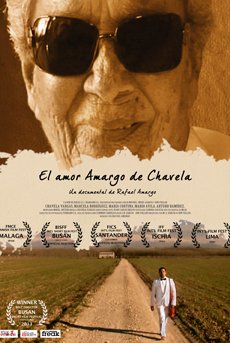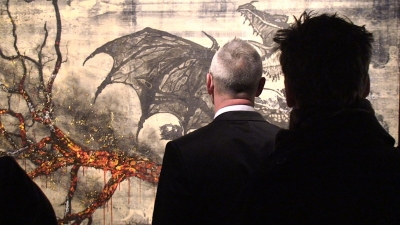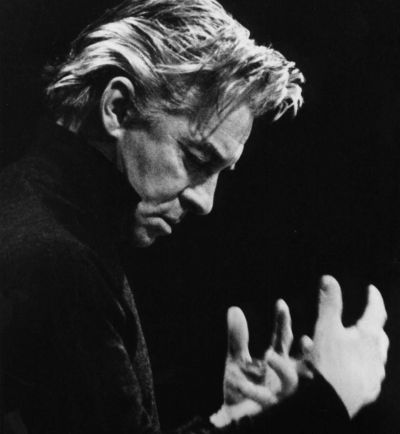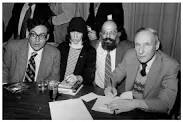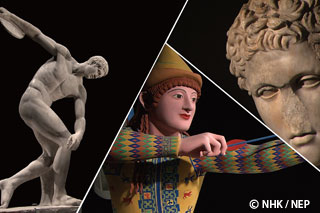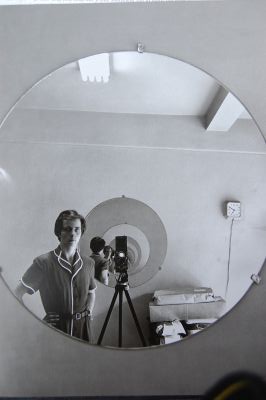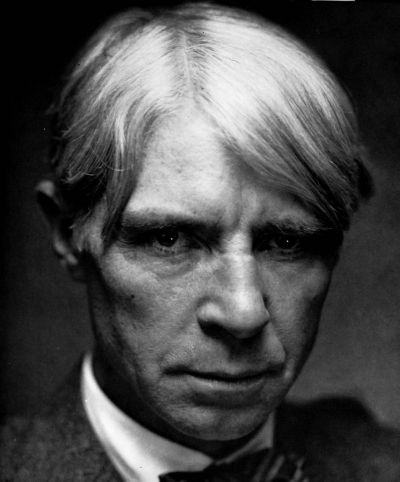El Amor Amargo de Chavela or Dreaming Chavela, if you wish, is a 2013 documentary about Mexican ranchera music singer Chavela Vargas who died in 2012 at the age of 81.
This documentary is what at first sight appears to be a far-fetched construct: 35 year old Spanish dancer and choreographer Rafael Amargo, whose surname means bitter, pays an imaginary visit to Chavela, whose musical leitmotiv was bitterness and presents her with a letter from Spanish poet Federico Garcia Lorca, who was executed by Franco’s forces during the Spanish Civil War. Garcia Lorca presaged his own premature death in a well-known poem that Amargo quotes to invoke the life of Chavela Vargas.
But all art is after all, a construct, an artifice used by artists to express a larger truth. The film has achieved its aim and brought tears to my eyes, like all good art does to all art lovers.
…

The Next Big Thing, 2013, is a film about the manner in which contemporary art has suffered dramatic changes at the hands of auction houses like Sotheby’s and Christie’s. Serious collectors no longer buy art as a result of their aesthetics or the advice of art historians, but on the basis of how much money they will fetch at an auction. That the Dutch have made such a film should not surprise us: after all, they have a long trading tradition dating back to the Dutch East Indies Company and needless to say, they also have great Dutch masters and some of the finest art museums in the world. Where else can you see a Rembrandt in an airport museum? Amsterdam, of course. But I am digressing.
Watch this film if you want to learn how art has become a commodity to be traded in the stock exchange. Artistic talent is a prerequisite, of course, but to parody a Zen koan: does art exist if nobody buys it?
***
Les Chercheurs d’art, 2014, is a Quebec production about art seekers, in the literal as well as metaphorical sense. The four characters in this documentary are sensitive, self-taught art lovers who believe in collecting art for their personal enjoyment as well as for the professional development of the artists themselves, particularly when the state is moving away from its role as patron of the arts.
The works of different contemporary artists are displayed as well as the film’s showpiece: a magnificent collection of ancient samurai art.
…
L’Autre Karajan, 2012, is a German documentary about Austrian conductor Herbert von Karajan who is considered to be one of the greatest conductors of the 20th Century. He was also known to be a perfectionist, a hard taskmaster, a man more interested in achieving immortality through his more than 200 million records than in warm contact with his fellow beings.
This film, which depicts intimate moments inside the recording studio, is an attempt at showing an alter image of the musical genius. It is in such moments, while rehearsing, that he lets his conductor’s proverbially expressive hair down. With his recording buddies he is funny, relaxed and talkative. Otherwise he shows himself to be a control freak adept at manipulating sound as adroitly as his own public image. It is surprising to learn that Karajan preferred perfect recordings to imperfect, albeit warmly human concerts with a live audience. It is this contradictory side of the conductor that this film finally demonstrates.
A touch of unwitting humor: during curtain calls, every time Karajan exited the stage, an aide would put a coat over his shoulder while the conductor hurriedly signed an autograph and then hurriedly reentered the stage. A great example of teutonic efficiency!
As to his political leanings, the film very wisely eschews the subject.
***
BEAT GENERATION, 2013, as the title implies, is the story of Jack Kerouac, Allen Ginsberg and William Burroughs, founders of the social and literary movement of the same name. This French documentary by Xavier Villetard is the latest addition to the long filmography depicting the sexual, drug and political escapades of these three life-long friends who were simply doing their thing and in so doing, they ended up challenging a puritanical America. They waged, and won a war against censorship and championed gay liberation. Jazz and Whitman’s poetry are two important influences in their movement.
***
CENDRILLON DANS LA FORET ENCHANTEE, is a truly magical rendition of Rossini’s La Cenerentola, an opera that includes drama, humour and fantasy. This cinematic rendition itself combines different techniques, including animation, theatre, choreography and special effects. Rossini departed from the original story of Cinderella by changing some of the characters and giving it a realistic ending. The music is performed by the RAI National Symphony Orchestra, led by conductor Gianluigi Gelmetti, a leading Rossini expert. Annalisa Corsi designed the animation sequences with the collaboration of Maurizio Forestieri.
If you like animation, opera, theatre, ballet, music or just plain beauty, do go and see the film. Your senses will thank you. So will your soul.
***
SECRETS OF THE BRITISH MUSEUM: ANCIENT GREECE REDISCOVERED, 2012.
This documentary starts off with a handsome oriental man with beautifully-coiffed wavy hair entering the British Museum in London giving the viewers a lesson in Greek antiquities in Japanese. It turns out that he is a famous Japanese actor. Such is our globalized world!
The premise of the documentary is quite simple: white is not necessarily the emblematic color of purity. Director Tomomi Nagasawa sets out to debunk the idea that ancient Greek art is a “white” culture. Rather an Italian pigments expert in the museum does the job of proving it. Using state-of-the-art technology he demonstrates that all those lovely marble sculptures in Ancient Greece and different archaeological sites in Egypt, Mesopotamia and Persia were polychromatic. He also proves that ancient Greek culture was highly influenced by these three great civilizations and not the other way around. This he does with the detection of a certain blue pigment which was artificially produced in Egypt and nowhere else. Is that surprising? Europeans might be shocked to learn that their continent was not the cradle of what they consider the ultimate aesthetic canons but this reviewer was not. After all, many ancient archaeological sites in India, Mexico, South America and even Crete show vestiges of pigments. Didn’t the Europeans know that time and rain wash away colors? The British Museum certainly did not eighty years ago when one of its benefactors ordered Greek antiquities to be “cleaned” and polished with potent abrasives and acids to turn them whiter. Enough said.
***
Les Etats Inventes d’Amerique based on the work of Montreal-born photographer Pierre Guimond is not really a documentary, but rather a larger-than-life photomontage of the country called the United States of America. This magnificent film is the result of Guimond’s 10 years of journeys in the United States which produced more than 18,000 photographs. Different still photos have been pieced together by a team of producers and directors and other professionals in what would appear to be an incongruous manner but which actually tells a story: the anomy of modern life against the background of a teeming humanity that is constantly reinventing and expressing itself. Ambient sounds have been incorporated into this surreal kaleidoscope of a nation that tried to deny its past by constantly projecting itself into the future.
They say an image is worth a thousand words. What can one say of 18,000 images? Nothing much. Perhaps mind-boggling would be an apt description.
One little petulant peeve: the team who participated in this monumental task might well remember that less is often (almost always) more. 86 minutes of such rich fare can overload the senses.
Les états inventés d’Amérique (Bande-annonce) from Diffusion Multi-Monde on Vimeo.
***
March 20 2014
Long-awaited spring finally came to winter-besieged Montreal and so did the 32nd FIFA, that is, the International Festival of Films on Art, not the soccer federation. The festival opened with a showing of Off Ground, a Dutch short and Une chaise pour un ange, a Canada-Finland co-production. Alas, they shall go unreviewed by Montreal Serai since our 28-year old Montreal-based international ezine did not receive an invitation to this special event. But never mind. We keep true to our mandate of bringing the margins to the centre.
***
Talking about marginal artists, Vivian Maier: Who Took Nanny’s Pictures? celebrates the anonymous life of Vivian Maier, a professional nanny who took more than a 100,000 photographs in her lifetime, yet most of them were never exhibited, published or printed anywhere. And now they are worth thousands of dollars — each! Shortly before her death, she had fallen down and sustained injuries for which she was hospitalized and from which she never recovered. During her hospital stay, the contents of her locker were auctioned off and bought sight-unseen by people who later discovered a treasure trove of negatives and some prints of people going about their daily lives in Chicago. Like Van Gogh and other great artists before her, she became a “phenomenon” posthumously. Her body of work consists mainly of portraits of the children under her care in an upper-crust Jewish neighborhood in North Chicago and street people in the seamier neighborhoods on the South Side. The people who frequented Marshall’s and other department stores in The Loop have been photographed with a twinkle in the photographer’s eyes.
Vivian Maier’s life is a complete mystery. Could it be that it was because she lived in France during the occupation and wanted to forget its untold horrors? In her last years she was often mistaken for a bag-lady, but make no mistake. Vivian Maier was one of the 20th Century’s outstanding street photographer.
***
The American Midwest has been the cradle of many artists, intellectuals and activists in the United States. Carl Sandburg is no exception. Sandburg was born to Swedish working-class parents in the State of Illinois, he was raised in Wisconsin and he sharpened his journalistic pen in Chicago. Sandburg himself voluntarily joined the ranks of laborers by dropping out of school and earning a living doing different jobs, menial and otherwise. The Day Carl Sandburg Died is a moving and inspiring chronicle of the life-journey of a poet, journalist, writer, historian and socialist who called himself “the eternal hobo”. He taught himself poetry in order to be able to sing to the workers and disenfranchised people he met throughout the length and breadth of his vast country while riding the rails with other hobos. He also participated in the Spanish-American war which left him with a profound distaste for military solutions to social conflict. This peace-loving conviction was deepened by the horrors he saw during the Great War.
Like many aspiring writers, young Sandburg became a journalist in order to be able to earn a living with the proverbial pen which was really a typewriter. His professional rewards came later in life when he won three Pulitzer Prizes, two of them for poetry and one of them for his multi-volume writings on Abraham Lincoln, his hero. His newly found success permitted him to move his family to South Carolina so that his wife, three daughters and two grandchildren could enjoy milder weather. But at heart he remained a midwesterner.
Sandburg is mainly known as a people’s poet, not an intellectual poet like T.S. Elliot, who also cut his teeth in Chicago. That epithet was often flung at him by literary critics who wanted to deride his literary abilities. But that did not bother Sandburg, an anarchist who was proud of belonging to the socialist party and the I.W.W., an internationalist labor movement. When he went to Sweden, his ancestral home, to cover the Bolshevik Revolution, his country’s secret services were on his case. When he returned from Sweden he was met by secret service agents who confiscated the $10,000 that Lenin had asked him to take to the workers of America, but they failed to detect the letter sewn inside his coat lining. In it Lenin had invited the American people to join the international revolution. These agents also failed to jail Sandburg, perhaps aware of the fact that doing so would alienate the government in the eyes of the common man.
Ah, yes, Sandburg was also a musicologist. He compiled hundreds of songs that he had culled during his travels throughout the countryside. Pete Seeger sang some of them while Russian poet Evgeny Yevtushenko celebrated his poetic talent. Where did Yevtushenko and Sandburg meet? In the Soviet Union, when the latter took an exhibition of photographs called The Family of Man taken by his wife’s brother.
So much talent, so many skills, but Carl Sandburg will mainly be remembered as the nation’s conscience.

